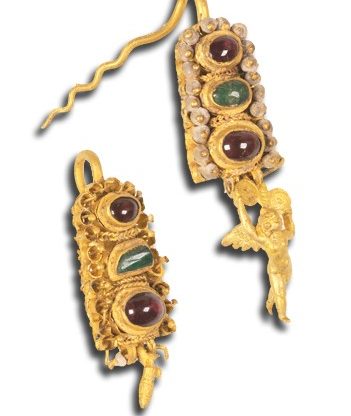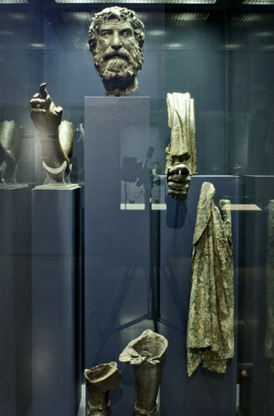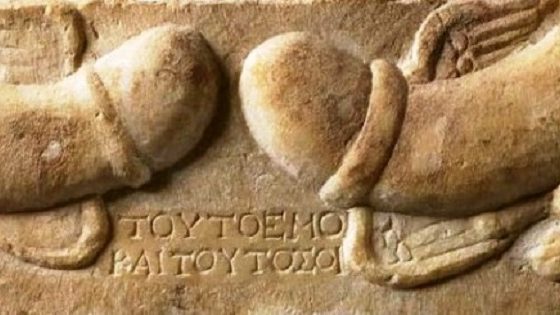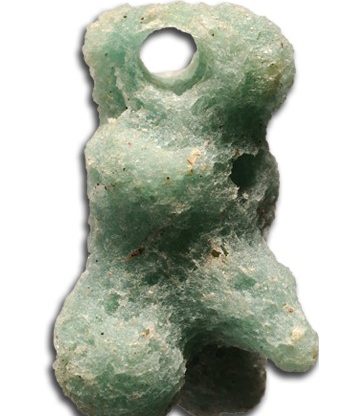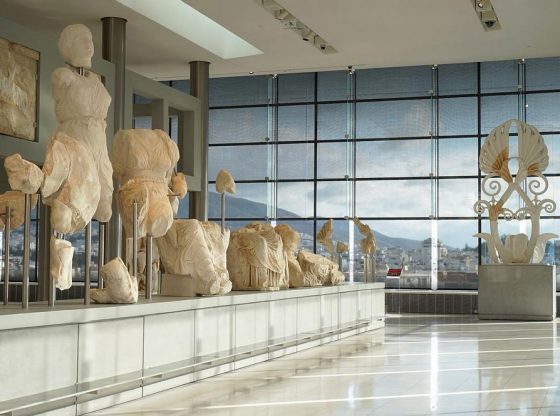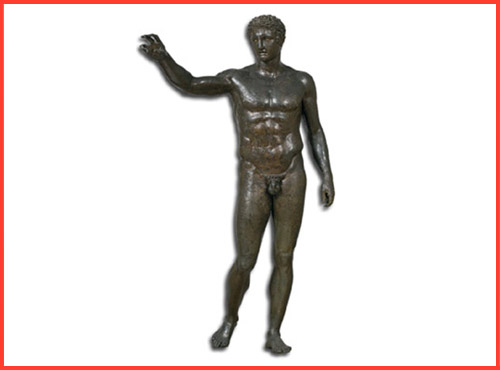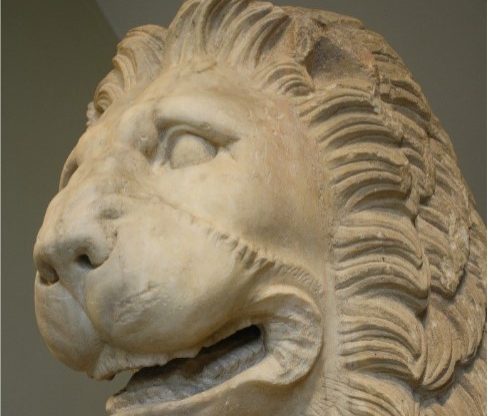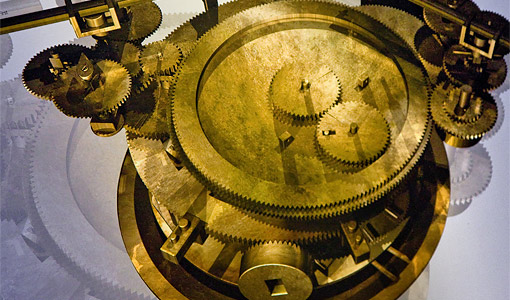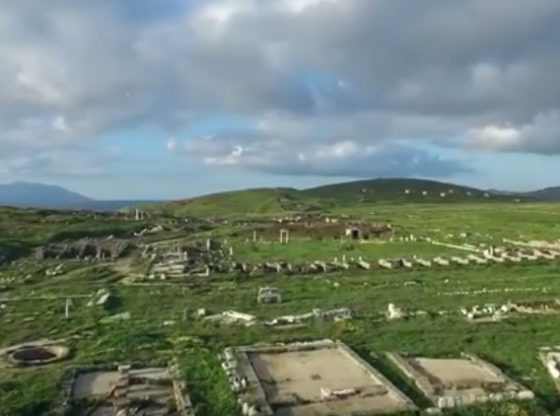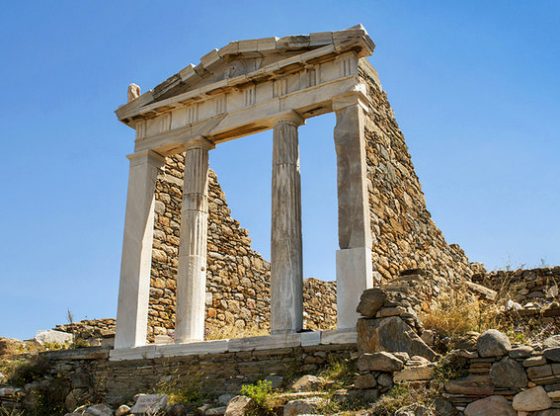Material: Gold, pearls, garnet, emeralds or prase (ancient prasios)
Provenance: Antikythera shipwreck. From the material retrieved in 1976
Date: Second half of the 2nd – early 1st BC
Dimensions: Max. height: 6 cm
Inv. no: Athens, National Archaeological Museum Χρ. 1579 and Χρ. 1579α
Room:Temporary Exhibitions Wing, Room II
The earrings are composed of a horse-shaped hammered plaque, a suspension hook, and the pendants, one with an Eros and the other with a miniature alabaster, from which once the Eros figure (now missing) would have hung.
The plaque’s surface is decorated by three successive oval settings: one holds an emerald or prase, being flanked by two cabochon garnets, inlaid in smaller rimmed settings. The settings are separated by twisted wires and are surrounded by twenty tiny pearls attached with the aid of pins to an equal number of small cylindrical settings soldered to the main plaque.
The Eros figure in the near-dancing pose that characterizes such figures of this age holds aloft in both hands an open folding mirror. The two attachments belong to that group where essentially identical figures yet displaying contrasting movement, in postures also termed “mirror images”.
Τhese earrings are similar to those from the “hoard” on the island of Delos and Palaiokastro/Thessaly. Due to their polychromy and the presence of Eros- Attis in other specimens of the category some scholars attribute them to Syrian workshops. According to another theory, they are creations of goldsmiths influenced from the jewellery production of Black Sea and Ptrolemaic Egypt. The presence and professional activity of Syrian merchants and craftsmen in Delos, the tax heaven of the ancient world from 166 to 69 BC should be mentioned. The combination of colored of precious and semiprecious stones with pearls on female jewels was facilitated by the easier provision of those materials from the middle of the 2nd century BC. Pliny in his work Historia Naturalis 37.12 links the love of pearls and precious stones to the triumph of Pompey in 63 BC.
A few other gold jewels were collected from the shipwreck: one more similar earring with kithara-playing Eros, a rhomboid setting with inlaid emerald or prase and a bezel-setting, met in costly inlaid necklaces, and a male finger-ring. It is noteworthy that human bones were found in proximity to this jewellery. Among them one cranium is identified as a probable male and a second as a probable female. Freighters, primarily, wheat carriers of both sexes.
http://www.namuseum.gr/object-month/2012/jun/jun12-en.html


